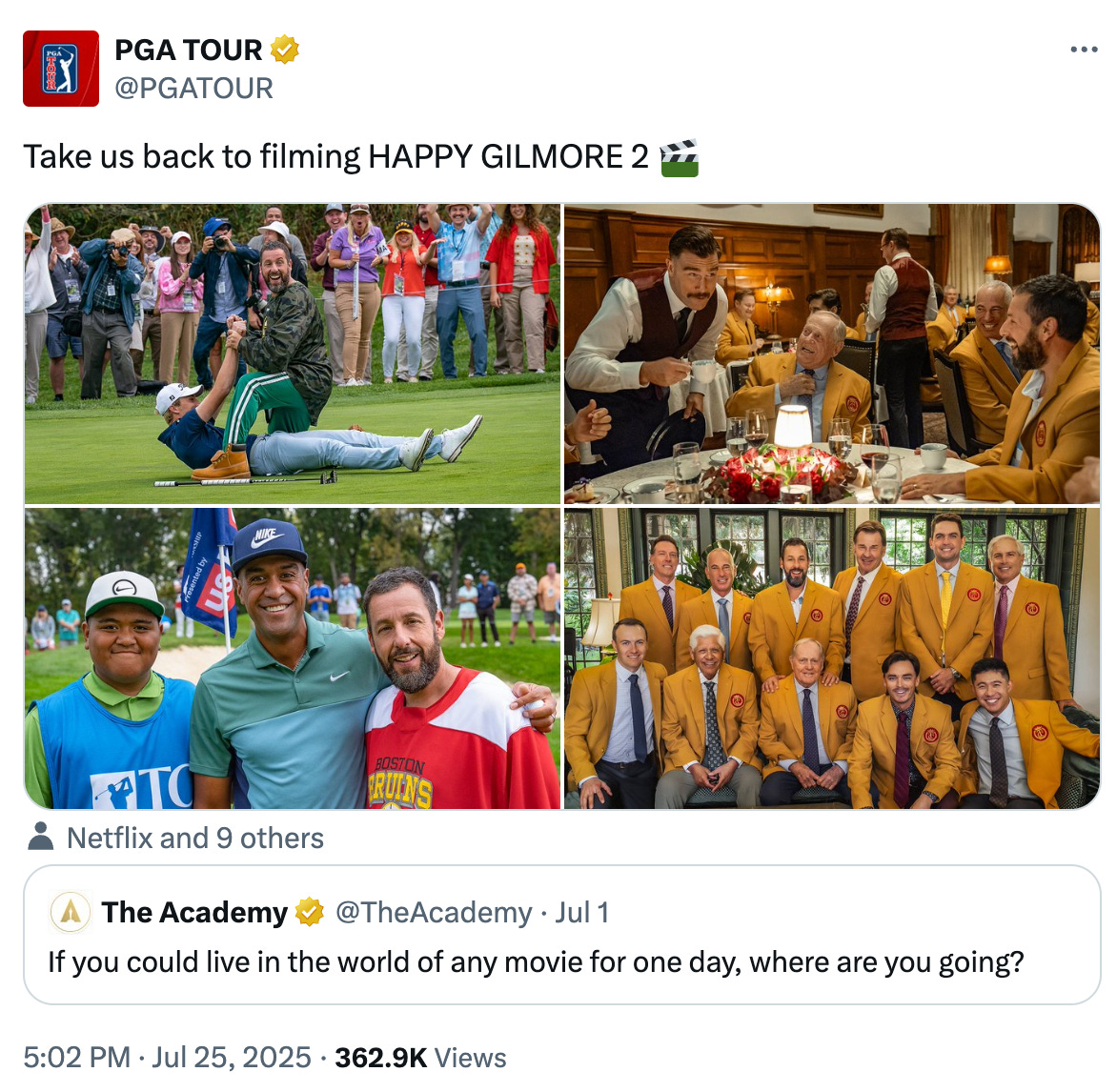Sequels Are Like Bad Exes: Hollywood’s Franchise Addiction Is Killing Original Movies
How risk aversion, AI, and endless reboots are turning movies into marketing campaigns
If you’re as exhausted as I am by the endless parade of sequels, remakes, and franchise reboots clogging up Hollywood’s arteries, you’re in the right place. Today, we’re breaking down the creative stagnation of the film industry and what you — yes, you — can do about it.
Let’s get real: Hollywood’s 2025 slate looks like a graveyard of recycled IP, and it’s not just annoying—it’s a symptom of a much deeper problem. Consider this a call to arms for anyone who cares about the future of art, storytelling, and, frankly, not being bored out of your fucking mind at the movies.
The Franchise Problem: Hollywood’s Creative Bankruptcy
It’s impossible to ignore: the 2025 film calendar reads like a greatest hits playlist on repeat. Freakier Friday, Happy Gilmore 2, the ever-expanding Marvel universe, a new Harry Potter series—the list goes on. There’s a certain comfort in the familiar, sure, but at what cost? Hollywood’s reliance on established IP feels less like nostalgia and more like a creative holding pattern.
The culprit seems to lie in a cocktail of risk aversion, algorithmic logic, and the gravitational pull of brand recognition. Studios, wary of financial missteps, double down on what’s already worked. Streaming platforms, guided by data, serve up what’s most clickable. And brands, eager for synergy, embed themselves deeper into the DNA of these projects. The result? A landscape where originality is increasingly crowded out by the safe and the known.
The Over-Commercialization of Art: When Movies Become Billboards
It’s hard not to notice how movies and TV have become, in many ways, elaborate vehicles for product placement. The days of subtle nods to brands (the OG Jurassic Park’s iconic yellow Jeeps) have given way to a new era where sponsorships are front and center—sometimes even dictating the narrative. Watching a film can feel like being trapped inside a commercial, with storylines bending to accommodate the next big brand integration.
This isn’t just about aesthetics; it’s about the shifting priorities of the industry. When corporate partnerships drive creative decisions, the line between art and advertisement blurs. The question becomes: are we watching stories or just elaborate marketing campaigns?
Where Originality Still Finds a Home
Yet, even as mainstream film and TV double down on the familiar, other corners of pop culture are alive with experimentation. Music, for instance, seems to thrive on risk. Artists like Chappell Roan and Lady Gaga regularly reinvent themselves, while others like Olivia Rodrigo channel old genres into something unmistakably fresh. The music world, for all its commercial pressures, still rewards those willing to take creative leaps.
Theater, too, remains an open terrain for new ideas. Broadway’s Oh Mary and other original productions prove that audiences are hungry for stories they haven’t heard before. And indie films like A24’s latest offerings remind us that there’s still an appetite for the unexpected, even if it’s not always reflected in box office numbers.
Art vs. Content: The Blurring Line
All of this points to a deeper cultural shift. The distinction between “art” and “content” has never been murkier. Social media, AI and streaming algorithms have created an environment where projects are greenlit based on their potential for virality and ROI, not their creative merit. The result is a kind of homogenization, a flattening of the cultural landscape, where surprise and risk are increasingly rare commodities.
What’s at stake isn’t just the quality of our entertainment, but the very spirit of artistic risk-taking. When everything is engineered for maximum appeal, we lose the unpredictability and diversity that make pop culture vibrant in the first place.
The Audience’s Role in the Ecosystem
It’s tempting to point fingers at studios and platforms, but the truth is, audiences are part of this equation too. Our viewing habits, our clicks and our dollars shape what gets made and what gets sidelined. The question isn’t just what Hollywood is serving up, but what we’re hungry for, and whether we’re willing to seek out something new, even when it’s not the first flick recommended on the streaming platform’s homepage.
Rediscovering the Joy of Discovery
Maybe the real challenge for pop culture right now isn’t just to produce more original work, but to rekindle our collective appetite for discovery. To remember what it feels like to be surprised, to encounter something that doesn’t fit neatly into a franchise or a trend. That’s where the magic happens—where art transcends content, and where we, as audiences, become more than just consumers.
So as we wade through another wave of sequels and reboots, maybe the most radical thing we can do is to look beyond the familiar. To champion the weird, the new, the untested. Because in the end, the future of pop culture depends not just on what gets made, but on what we choose to celebrate.
Tune into the podcast this week for more on this topic.






